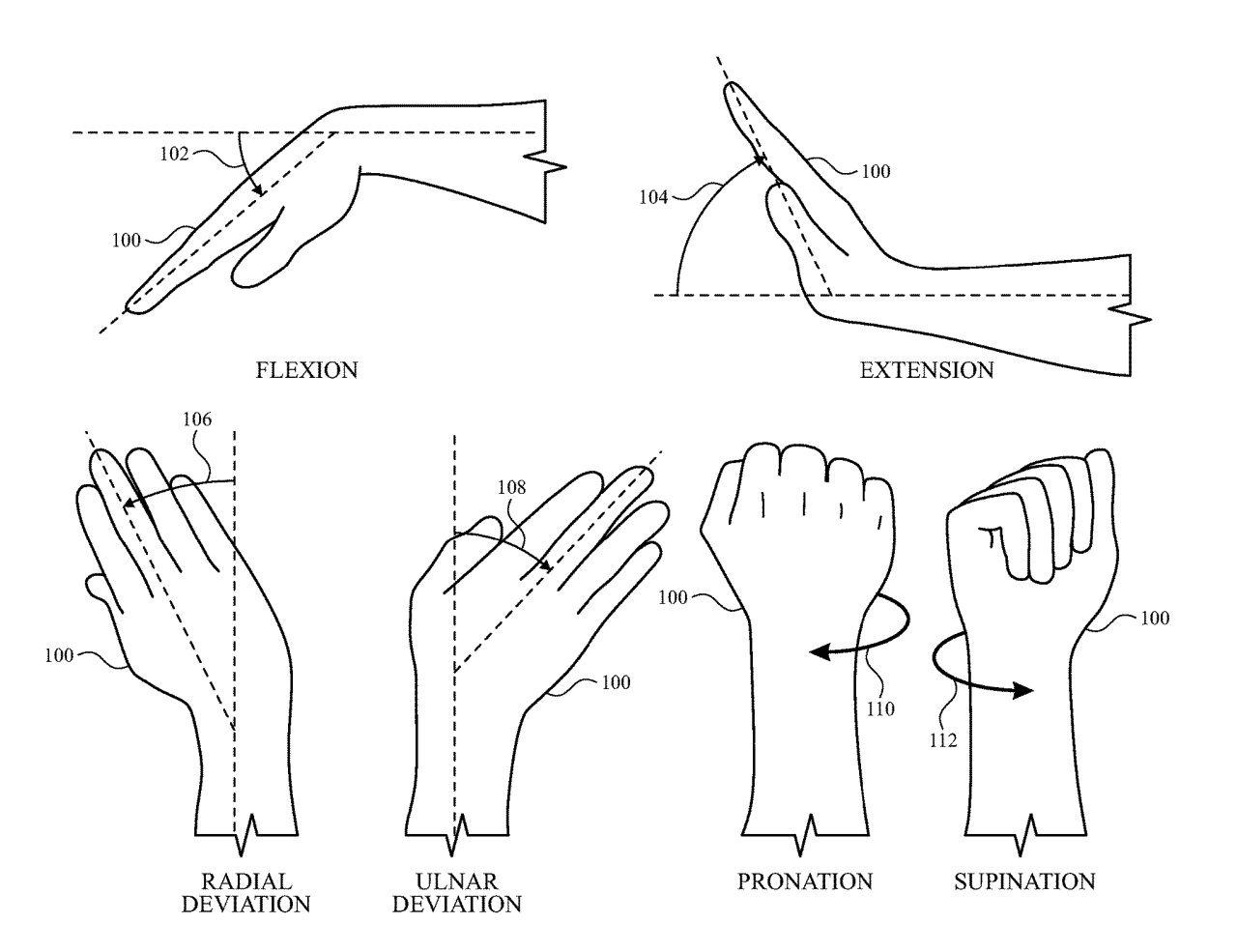Article Hero Image

AppleInsider may earn an affiliate commission on purchases made through links on our site.
Apple is investigating how the addition of electrodes to Apple Watch bands could detect the muscle movement and minute electrical activity when a user makes just about any finger gesture.
Apple Watch already knows when you're just lazing around and should really start a workout. But in future, it could glean details from electrodes in your Watch band that tell it much more precisely that you're shaking your fist and not doing anything actually active.
A newly-revealed patent application, "Electrodes For Gesture Recognition," says that such detection is necessary because other forms of gesture control have problems.
"In particular, a person's physical motions, such as eye gaze, body movement and the like can be detected and tracked over time as inputs to the computing system," it says. "Hand gestures, in particular, can be detected by touch or proximity sensors in a touch sensing panel."
"However, these sensors generally have limited detection range," it continues, "and therefore the hand gestures must be performed in close proximity to the panel."
Apple notes that gestures could also be detected by one or more cameras," but argues that these invariably have "line of sight limitations," and typically "require complex hardware and image processing." There are also handheld devices such as "wands, controllers, or gloves," but "these devices are not commonly worn or used, and are therefore less socially acceptable."
It's good to see Apple addressing socially acceptable concerns. When the Apple Watch came out, for instance, it was supposedly more discrete to glance at your Watch than to get out your phone, but no one has ever managed it without being noticed.
This new proposal would have you being able to just clench or stretch your hand to trigger the electrodes.
"[The] electrodes can be configured to detect electromyography (EMG) signals, which is the electrical activity that results from the contraction of muscles," says the patent application. "In some examples, the electrodes can detect EMG signals that are produced by activity of the flexor and extensor muscles and tendons in the forearm and wrist of a user."

There is already an Apple Watch Accessibility feature whereby clenching your fist can stop alarms, for example. With the sensor data coming from electrodes ranged all the way around your wrist, though, the Watch could detect finger movement.
So you wouldn't have to give a wrist-twisting "wrap it up" gesture to someone, you twitch a thumb. As is typical with patent application writing, Apple aims to cover the widest conceivable range of possible future ideas, but not to tie itself down to many examples.
As ever, the patent application's almost 11,000 words are about making this process work, rather than what can then be done once an electrode has sensed a certain movement.
"To detect the EMG signals, multiple rows of electrodes and conductive wiring can be formed in the band of a watch or other wrist-worn device," says Apple. "In some examples, the band can include removable electrical connections (e.g., pogo pins) to enable the electrode signals to be routed to processing circuitry in the housing of the wrist-worn device."
"The signals from one or more of these electrodes can be utilized as a reference electrode," it continues, "and measurements between the signals from the active electrodes and the one or more reference electrodes can be obtained to capture EMG signals at a number of locations on the band, [using] the electrical activity that results from the contraction of muscles."
This patent application is credited to seven inventors. That includes , including Daniel A. Podhajny, whose previous work for Apple includes researching how to make a Star Trek-style communicator.